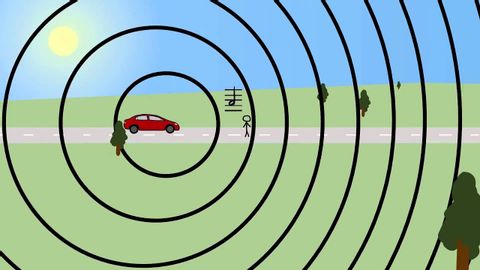
Subtitles & vocabulary
The Doppler Effect: what does motion do to waves?
00
VoiceTube posted on 2016/07/14Save
Video vocabulary
cause
US /kɔz/
・
UK /kɔ:z/
- Noun
- Belief, goal or organization that people support
- Reason for
- Transitive Verb
- To make something happen; create effect or result
A2
More effect
US /ɪˈfɛkt/
・
UK /ɪ'fekt/
- Noun (Countable/Uncountable)
- An advantage, benefit
- Change brought about by a cause; result
- Transitive Verb
- To cause (something) to happen; bring about.
A1TOEIC
More spread
US /sprɛd/
・
UK /spred/
- Noun (Countable/Uncountable)
- A big meal, often laid out as a buffet
- The distance between two things
- Verb (Transitive/Intransitive)
- To place over a large area; to cover a large area
- (Of ideas, gossip) to pass to and affect others
A2TOEIC
More change
US /tʃendʒ/
・
UK /tʃeɪndʒ/
- Transitive Verb
- To exchange one set of clothes for another
- To exchange one kind of money for another
- Noun (Countable/Uncountable)
- Exchange of one set of clothes for another
- Money in the form of coins instead of paper
A1
More Use Energy
Unlock All Vocabulary
Unlock pronunciation, explanations, and filters
